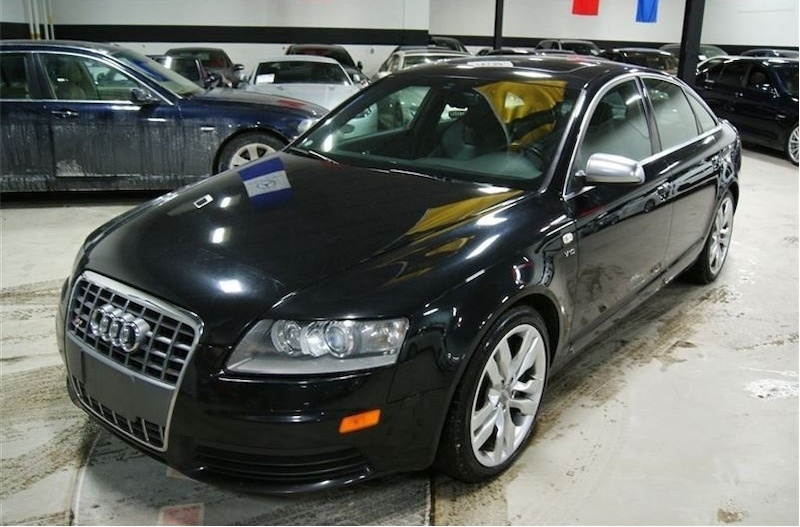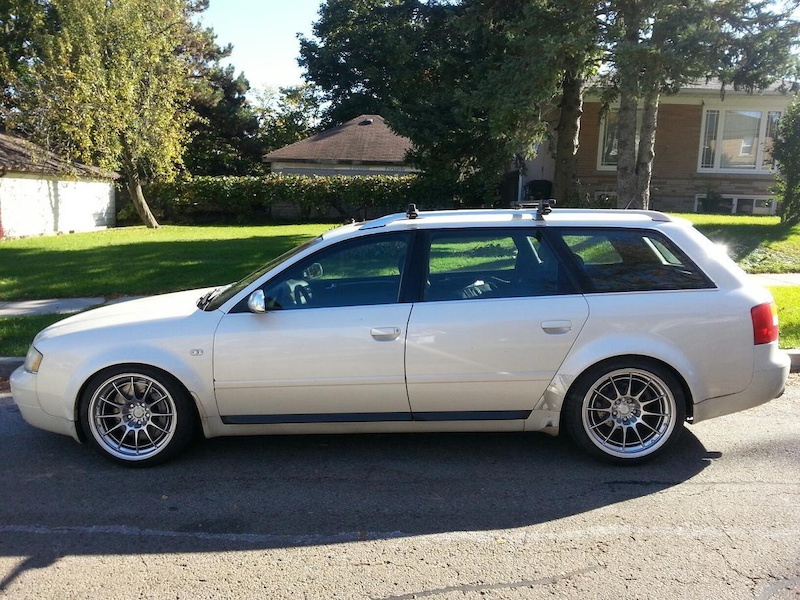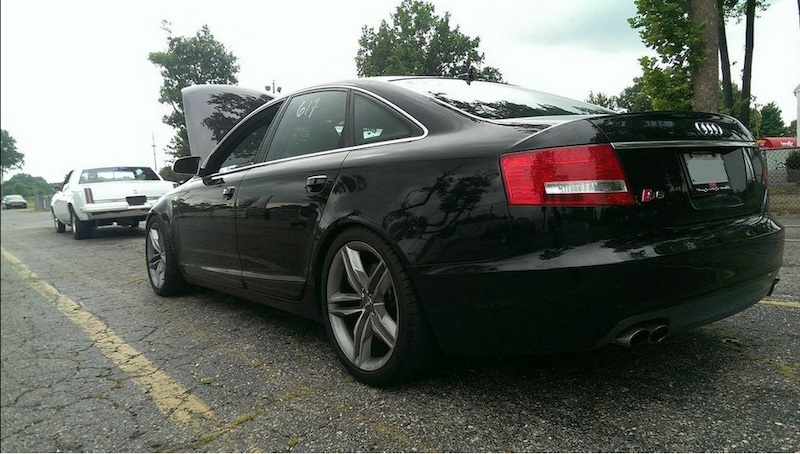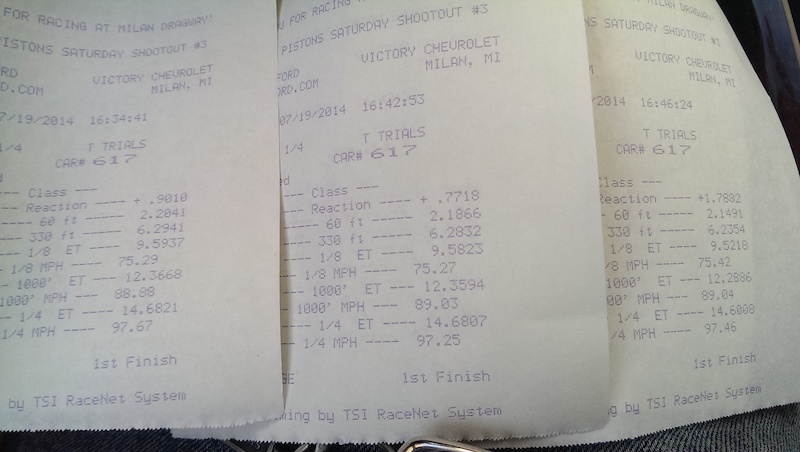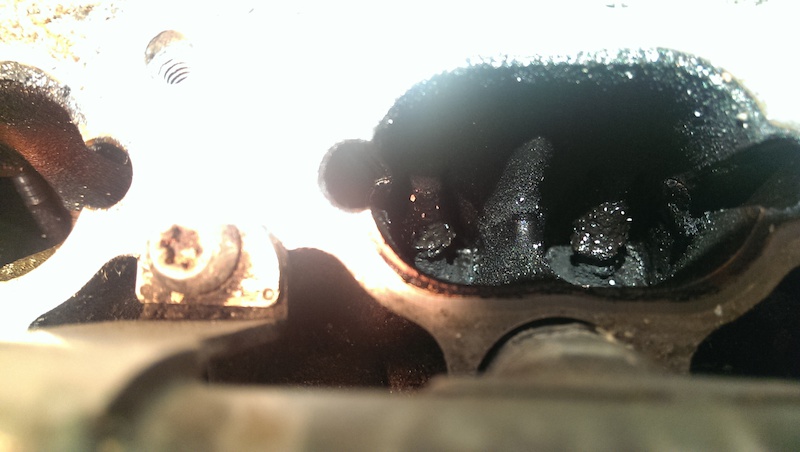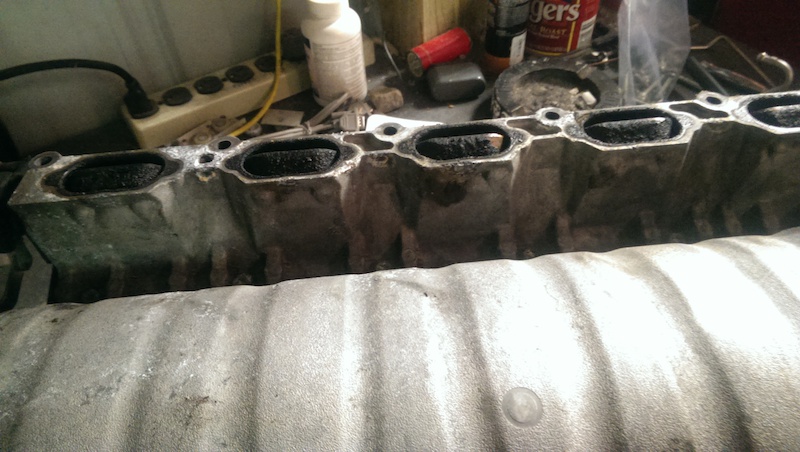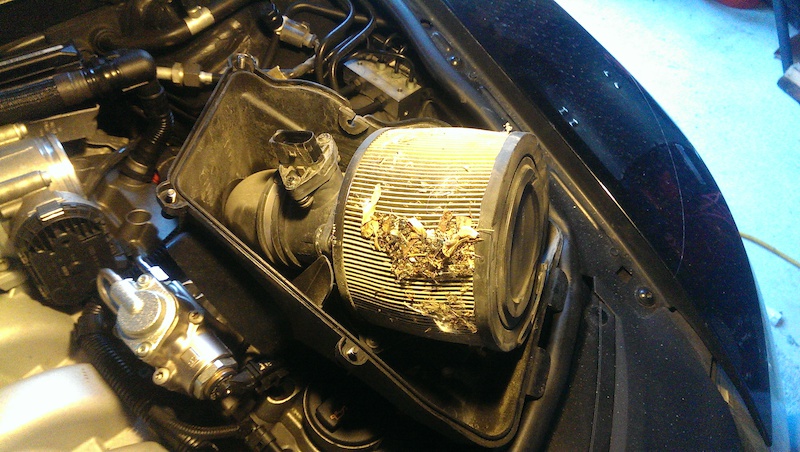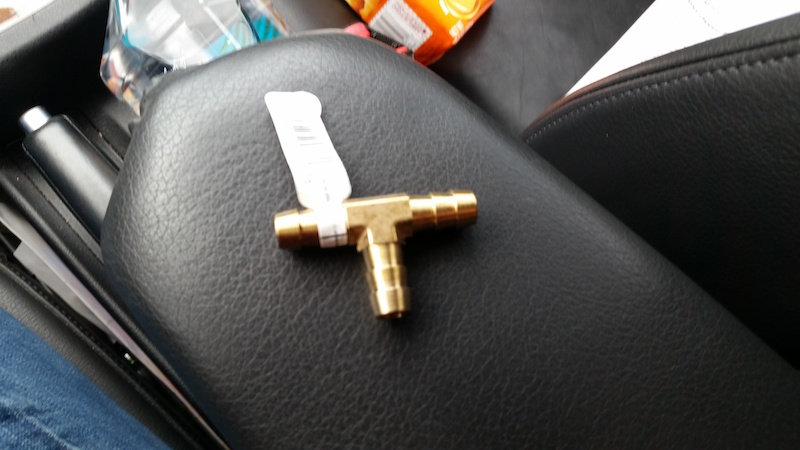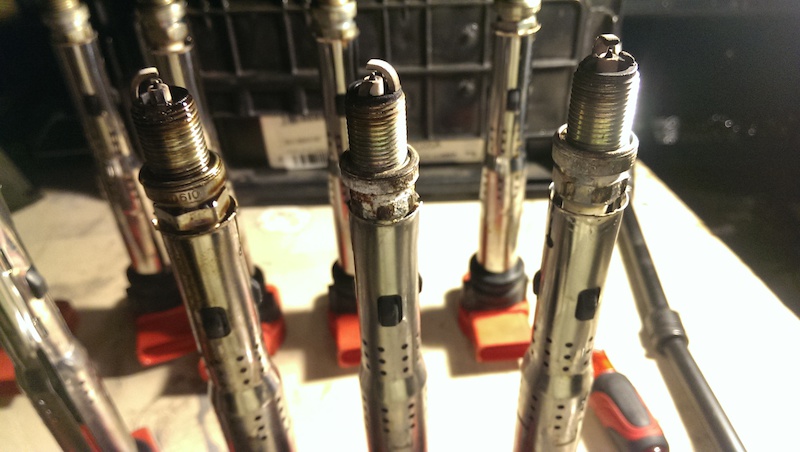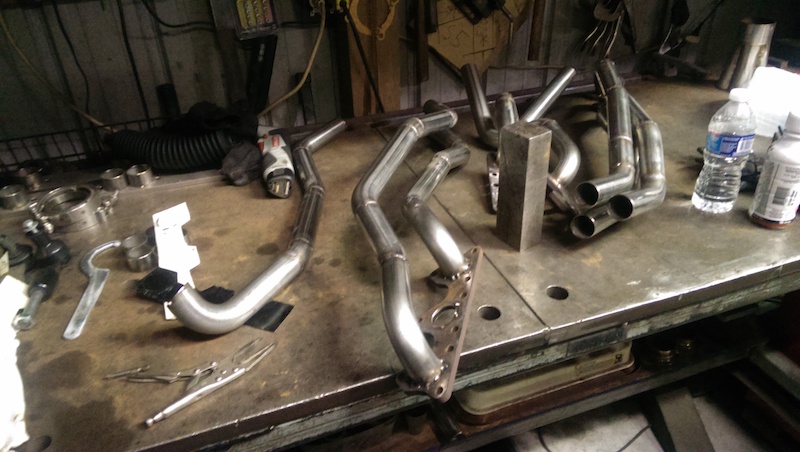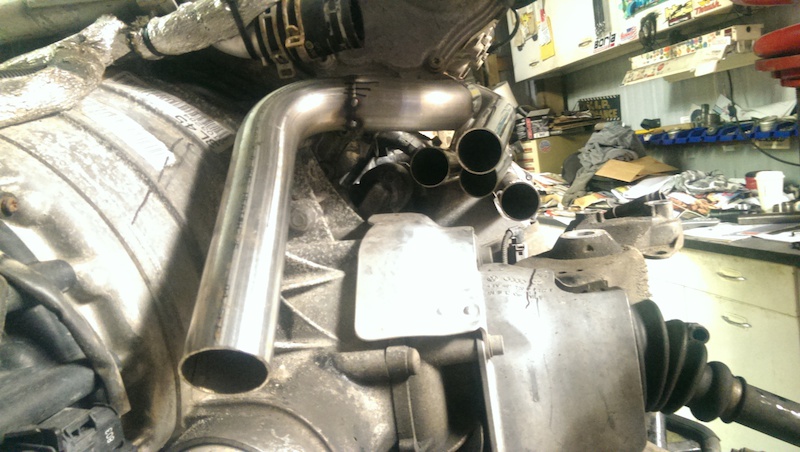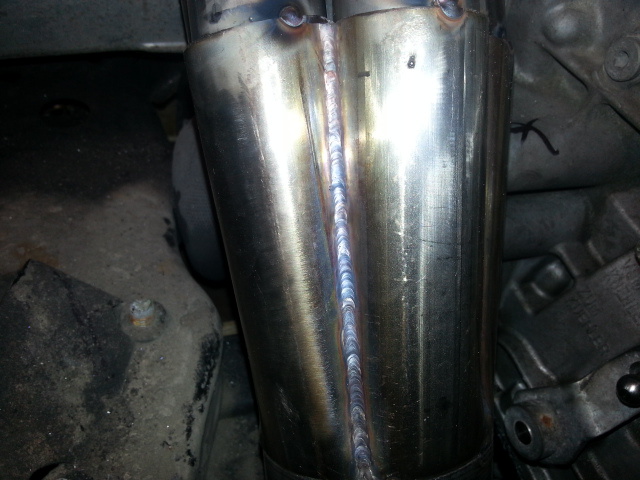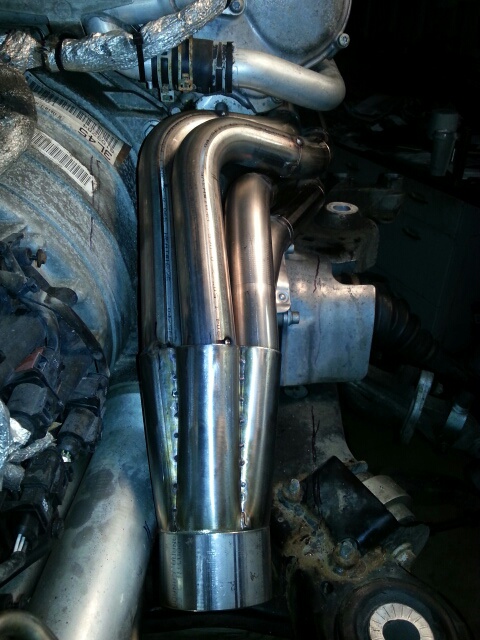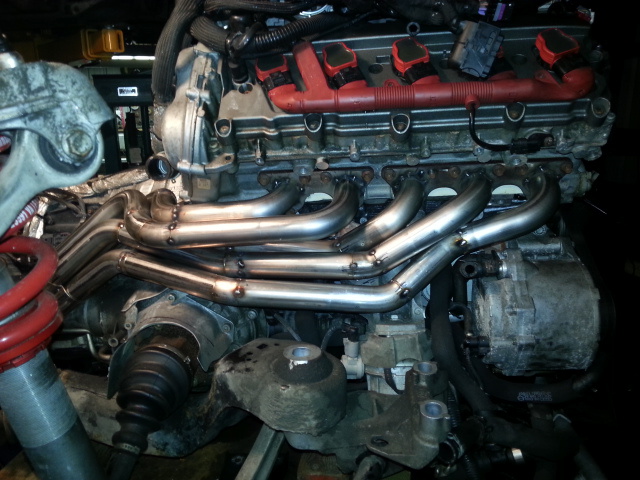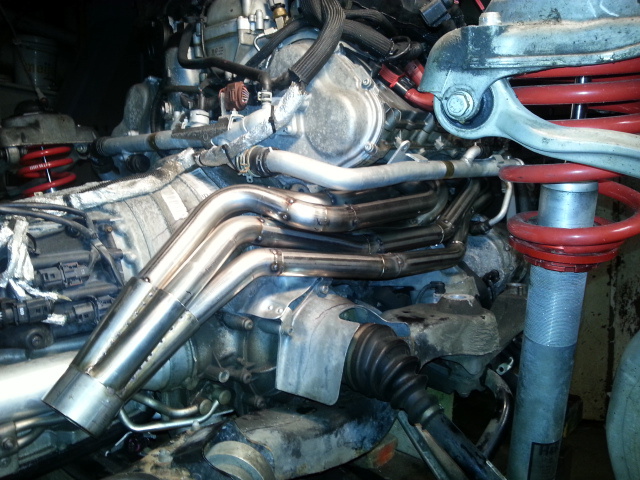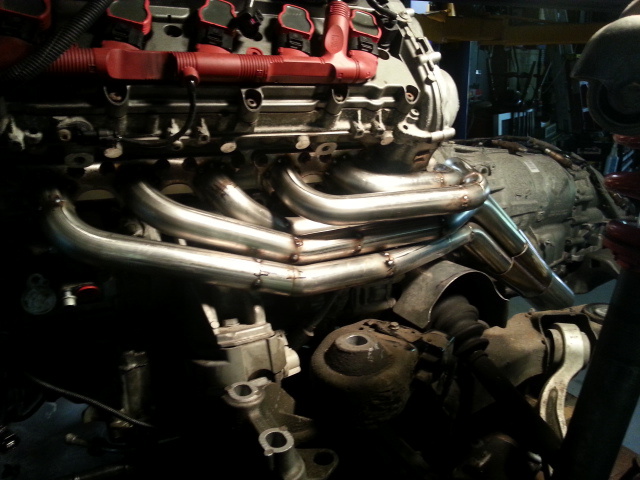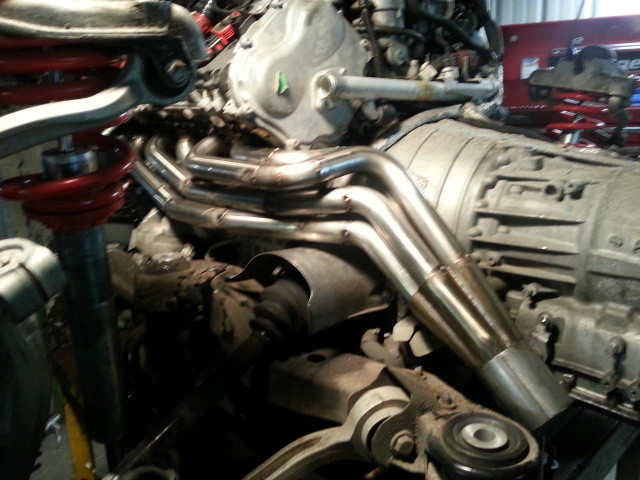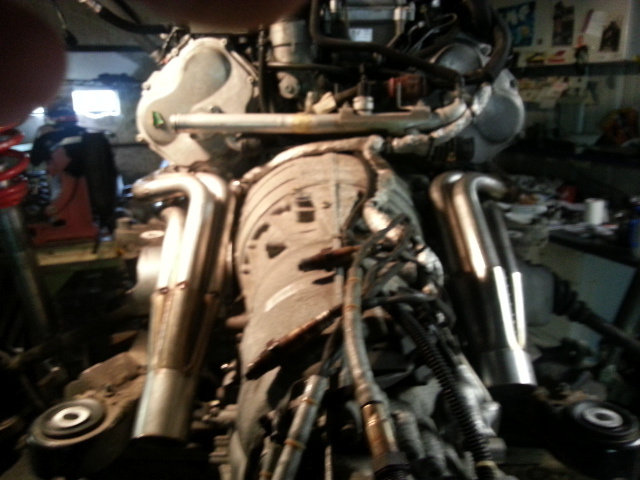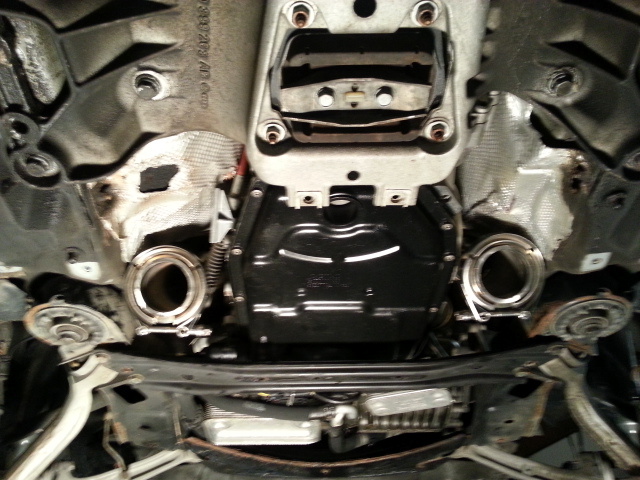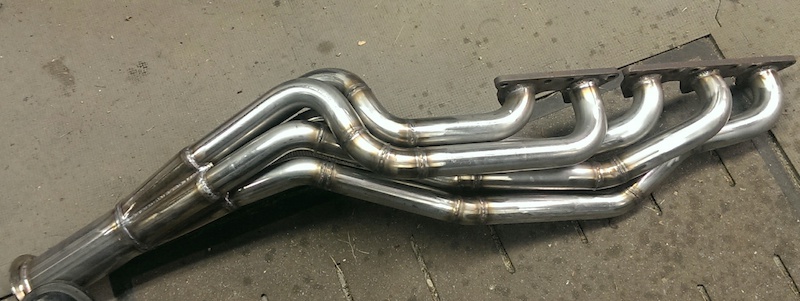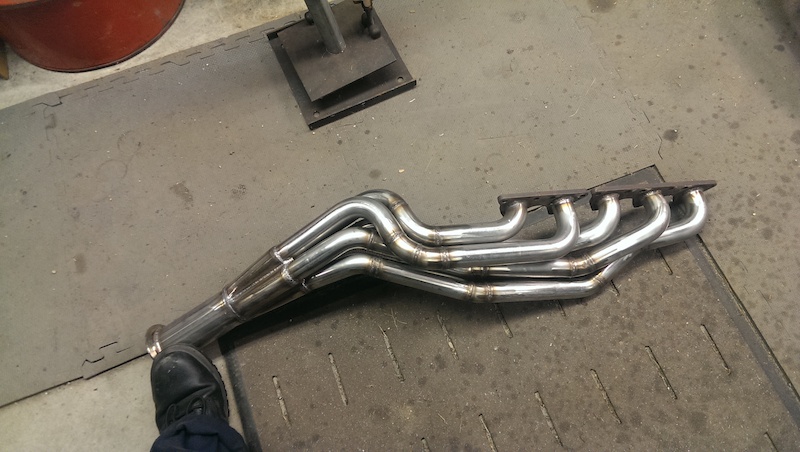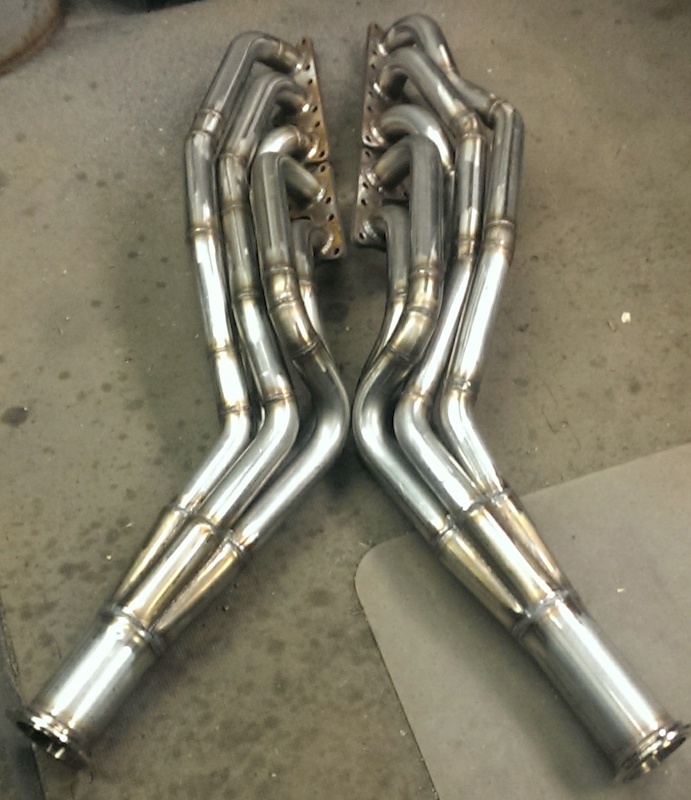the v10 s6 project
Introduction and History
Last summer I purchased a C6 v10 S6 with plans to make it my next daily driver and project
car. Everyone kept telling me that the v10 S6 couldn’t be modded, so of course I purchased one
with plans to mod the hell out of it. But before we get to the v10, a short recap of how I ended up with
there.
My previous four Audi’s were v8 C5s (two A6 4.2s, an S6, and an RS6). In the summer of 2014 I was on the verge of taking my C5 v8 S6 to the next level, when I stopped myself to review the plan.
My old S6 wagon
The v8 S6 had some very nice mods (coilovers, BBK, high flow cats, 19’ wheels, etc) and
was an amazing car to drive. However, at over 200k miles, the car needed a respray to make it look
sharp, plus I had an OEM Avant RS6 bodykit ready for installation. On top of that, I was considering
forced induction to add some power to the car. Just those mods alone, done right, were going to be up to
another $20k.
$20k is a lot of money to spend on a 10+ year old car with 200k, so I had to be REALLY
sure I was going to keep it for a while after the work was done. When I really starting to think hard about
the finished project, I realized that it probably wasn’t the car I wanted to drive for the next five years. I had
become all C5’d out. The C5 S6 was my favorite of the ones I had owned, but after having a C5 in
the driveway for most of the last ten years, I realized that it was time to move on.
On my previous A6 4.2 project car, I had done a lot of work. I had replaced the heads and intake with D2 S8 parts, and done Milltech DPs, high flow cats, coilovers, exhaust, 6speed swap, EuroRecaros, etc. (http://www.audizine.com/forum/showthread.php/470167-2000-A6-4-2-Project-Mayhem). When the car was finally close to being finished and ready to get a respray, I also ended up bailing on the project and selling
it off. The project had kind of worn me out, and like on the S6, I decided to quit when it came to dumping a lot
of money into painting the car. I recognized the pattern here, and decided that my efforts would be best
spent on a solid car with a good body and paint, that had a newer design.
So, after deciding I was done with the C5 platform, I was off investigating new cars for
a next project. I was looking at a bunch of different cars, when I came across the perfect vehicle; a
totally stock black on black 07 v10 S6 with Recaro seats. The car had about 130k miles, but was in excellent
condition. And since the plan was to tear the car apart and replace anything that looked suspect along the way, the higher miles were not a concern. A deal was negotiated, and the car was brought home.
Getting started
The car easily passed safety at the local garage, and while there I took the opportunity to have some aftermarket bits installed (H&R coilovers, OEM S5 wheels, H&R rear swaybar). I then got together with a team of guys, who were just as excited about the car as i was, and we started to do research on the v10 S6. We quickly found that there was just as much solid information available on the web, as there was misinformation. In general, there was a lot of mystery surrounding the car, mostly involving the v10. The response to this was the v10 S6 Info Dump (http://audirevolution.net/forum/index.php?topic=2614.0). A place where v10 owners and people with hands on experience with the cars, could provide verified information so we could get to the real facts, and kill the misinformation floating around.
The plan for the car had three main goals:
-
Tear everything apart to make sure we are building our car on a solid base
-
Proactively replace any parts that could break, while the engine was out (e.g. waterpump, starter, etc)
-
Build products to increase power and efficiency while addressing the shortcomings and restrictions built into Audi’s design.
Up until now, I think it is fair to say that performance enhancements for the v10 have been largely unexplored. There are a few products from different vendors (ECU tunes and catbacks) that are available for
the v10 S6, but even those seem more like an afterthought then a product that was well thought out and designed specifically for the v10 S6. At the time when we started the project, it was clear there was nothing currently available proven to substantially increase performance. So, without establishing any kind of deadline for the project completion, we set out to thoroughly explore every aspect of the car’s drivetrain design,
looking for ways to improve performance and efficiency.
Before we ripped into the car though, we wanted to establish a baseline. Dynos that I could find online for the car were all over the place (anywhere from 270 awhp, to 380 awhp), and are generally of limited value. Road and Track had the ¼ at 13.5 (http://www.roadandtrack.com/new-cars/road-tests/reviews/a13037/2007-audi-s6-1/). Car and Driver did a comparison with the M5 and E63 AMG, but conveniently forgets the ¼ mile for the S6, while it includes it for both the BMW and AMG(http://www.caranddriver.com/comparisons/2007-audi-s6-vs-bmw-m5-m-b-e63-amg-comparison-test).
So, the car was taken to the track and achieved the following results: Totally stock (except for OEM S5 wheels and H&R suspension)
2007 Audi S6 v10 14.6 ¼ mile, with a 2.15 60ft. The car was run 3 times back to back to ensure the times were consistent.
The car was definitely in need of a carbon clean, but did not have a check engine light. So, pretty much the condition of probably 90% of the S6s out there. A compression test was performed, and the engine appeared to be healthy. As you can see from the timeslips, the car ran very consistently over three runs.
Carbon yuck!
Air filters were cleaned prior to track visit, and malfunctioning intake manifold was fixed.
Tear her down
Back to the shop and the tear down began. The engine was removed and parts were checked along the way. For
the mileage, the car seemed to be in excellent condition. We found the following on review:
- small exhaust leak was discovered
- valve seals slightly weeping
- drive belt that goes from the crank to the alternator looked like it was ready to snap
- cracked coolant line that required a brass T fitting
Coolant fitting
Spark plug corrosion
The good news was that there was no sign of any undeclared accidents. This was important because some of the
products that were being considered (i.e. headers) were going to be a very tight fit. So, it was important that the car we were working with was as straight as it was when it left the factory in Germany.
As part of our proactive approach, we plan to replace the following parts even though they
seem to be working perfectly:
- Coilpacks
- Spark plugs (one degree colder than stock)
- Starter (20 hours labor if needed to be done later)
- Waterpump and thermostat (the complete assembly is known to become brittle with age)
- Sparkplug tube seals (will be replaced if determined to be bad)
- Coolant pipe seal at rear of cylinder heads (this is know to leak and cause coolant loss)
The Gameplan
We thoroughly reviewed the Audi Self Study Program for the FSI 5.2L engines that were found in the v10 S6 and S8 (http://www.vaglinks.com/vaglinks_com/docs/ssp/VWUSA.COM_SSP_923603_5.2lL_V10_FSI_Engine.pdf).
The documents show that the v10 is most closely related to the B6/B7 S4 engines and the B8 S5 v8 4.2. In many ways, it is like a FSI v8, with two more cylinders. People will often say the C6 S6 has the Lambo engine.
If you review the SPP’s you will find that this is not quite true. Really, the S6 v10 doesn’t share much more than displacement with the Lambo engine. But, I am sure having people believe the car had a Lambo v10 in it, helped Audi sell a lot of the cars. The RS4 engine is much more closely related to the Lambo v10, being almost identical in design minus two cylinders. The S6 engine is built as part of the lower revving series, as mentioned above.
With the close relation to the B6/B7 S4, the v10 S6’s path to better performance is going to look a lot like the tried and true formula that the fastest NA S4 guys used:
- Improve intake tract flow (if necessary)
- Reduce heat transfer to intake manifold (intake spacers anyone?)
- Long tube headers (optimal) or piggies (next best) with replacement of cats with high flow units
- Larger diameter catback with X-pipe
- ECU and TCU tune - To optimize the modifications
For more info on the B6/B7 S4 exhaust improvements, JustinIncredible’s writeup is a must read.
http://audirevolution.net/forum/index.php?topic=3080.0
In addition to aftermarket performance parts, a full intake and valve carbon clean and a
spark plug and coilpack replacement is planned.
Long Tube Headers
The stock tubular 2-1-2 exhaust manifolds are pretty impressive to look at. However, reading the details in the SPP reveal the focus of their design:
One solution to the exhaust gas pulsation phenomenon
would be to make an exhaust manifold runner for each
cylinder — a 5 into 1 header type system. However,
this system would be big and would create a thermal
disadvantage to the quick warming of the emission
required catalytic converters.
In other words, 5 into 1 headers would be ideal, but space would be tight and they wouldn’t get hot as quickly as the 2-1-2 design with the cat right up close to the engine. So, the stock headers are actually designed to heat up quick. LOL. And we wonder why you can fry an egg on the hood of the S6 at idle in the middle of
January in Canada.
Another hint that the stock cats and headers are not ideal is found when you look at the RS4,
R8, and Lambo engines. They employ high flow metallic cats, as opposed to the much more restrictive
higher cell ceramic cats of the S6, and use a 4-1 or 5-1 equal length design. Unlike the B6/B7 S4 which gain huge amounts of torque when switching to aftermarket headers and high flow cats, the aftermarket headers for the RS4 have shown very little improvement; i.e. they are already a great design stock.
So, we decided to go all out and replace the stock exhaust manifolds with a set of custom headers. Piggies would have been good too, But with the cats in different locations doing so would not bring the proper flow and balance to the cylinders. The entire stock headers design is built for restriction for emissions. Just removing the cats would be too small of a gain for the over all health and performance of the car. That, and since I wanted the engine pulled and everything on the car checked over, it made sense to spend the extra money and go
with the headers.
The four stock ceramic cats would be replaced with a single set of high flow cats downstream. The o2 sensors would also be moved downstream, for easier access. The cats are on v-bands, that can be removed for a visit to the track.
Custom headers are not cheap. And if you are going to buy cheap headers, then you will be better off just
sticking with the stock exhaust manifolds and doing piggies (not that there are any cheap headers for the v10, talking about the v8). However, the goal is a better running AND better performing motor. It’s not hard to tell what you need to improve the motor and its performance when Audi’s technical bulletin gives you the formula; 5 into 1 headers. When you look at all the performance gains from the Lambo, one of the main components responsible for the gain is the exhaust manifolds. Fact of the matter is, you can’t make power if you can’t get the exhaust out of the heads. So, I thought, let’s build what Audi outlined as the design without compromises, and doing so, also make the car a little easier to work on (especially if you have to get back to that area to replace a bad cat or faulty o2 sensor).
These are the improvements we are hoping to see from the headers:
Better flow – This one is obvious. Better flow equals more horsepower, in the case where the previous setup was restrictive.
Insane sound – The v10 engine sounds amazing enough. But with long tube headers, I can only imagine the sound is going to be INSANE!!!
Heat reduction near engine – The stock design is made to quickly build up heat, which is the opposite of what you want to do. With one of the main goals of the project being engine bay heat reduction, the new pipes with the cat relocation should achieve that.
Potentially thousands saved on maintenance – Replacing the cats with brand new high flow units and moving them downstream along with the o2 sensors, means that if I have to replace any of those parts, I no longer have to drop the engine to do the work. After researching online I was finding that, much like on the B6/7 S4s, the S6 cats were having issues and causing potential motor damage, appear to fail as they got older.
Possible reduction in carbon buildup – we will have to wait and see if there is any improvement in carbon buildup. I have read that carbon build up on the valves is a result of exhaust back flow. With increased scavenging, reduced heat, and better flow, I am hoping that the carbon buildup may be less than before.
So,the team of guys went to work. Numerous hours were spent getting fitment absolutely perfect. Apparently, they had to raise the engine in and out of the car over 60 times during test fitment. In my opinion, the final product is a thing of beauty 
The challenge was, how do you make true headers with the proper length, with the proper tuned bends all while trying to leave room for maintenance and functionality? It takes a lot of time to design properly. We could have just slapped together five pipes that met up in the same location, but when you look at headers that really actually make power, they are not just some tubes coming randomly off the heads. Real performance headers have a long list of requirements that follow the formula to help the motor make power. There is a real science behind the design when done properly. After many nights of reading about exhaust and header design, you start to figure out the key components to designs that make good power. I’ve seen the difference between people just building something that looks like headers and actual tuned headers. When you look at any domestic build producing big power they spend a lot of time on the headers and exhaust. And when you look at the v10 S6 (and the B6/B7 S4, B8 S5 4.2, C5 S6, D2 S8) you see that from the exhaust manifolds to the catback is where real performance improvements can be made.
Before final install on the car, they were wrapped with DEI Titanium Exhaust wrap, which hopefully will keep the temperatures down in the engine bay. They conclude with a collector with a 3-inch diameter v-band. So if you wondered what diameter we will be utilizing in the catback, well now you know 
Stay tuned for our next update!

